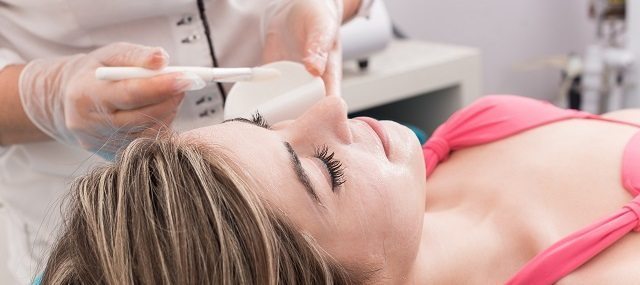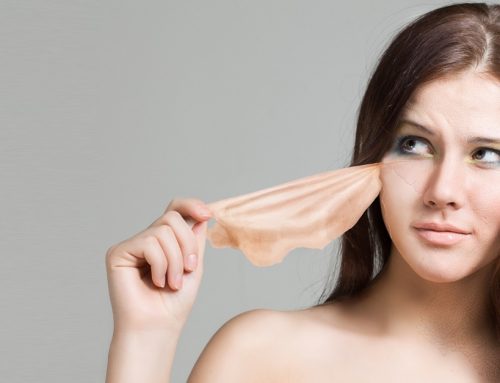Ancient Egyptians would smear sour milk on their faces to even skin tones and tighten the skin. Ancient Greeks and Romans used limestone poultices. Today, chemical peels have come a long way from their ancient roots.
Chemical peels continue to be a popular skincare option that can provide excellent results for aging, acne-prone, or sun-damaged skin — but now you don’t have to use sour milk or limestone and there are better, modern-science-based options available.
Essentially, a chemical peel removes layers of the outermost layers of the skin in an effort to improve skin quality by promoting skin healing and regenerating skin tissue.
Best Candidates for a Chemical Peel
As you might have suspected, chemical peels aren’t for everyone or every issue.
The best results are usually seen on people with fair skin and light hair but that doesn’t mean you should rule out chemical peels if you have darker skin. Talk to your skincare professional about what would suit your skin type.
Chemical peels are also most effective for people who do not smoke and are in good physical health.
If you are looking to treat acne, smooth wrinkles, improve skin texture, and address sun damage, then this is likely a good treatment option.
Types of Chemical Peels
There are three types of peels available for the modern skincare patient: light, medium, and deep.
- Light: Light chemical peels usually use alphahydroxy acids. That acid group includes fruit acids and salicylic acids. These peels are ideal for a quick recovery to daily activities, but only address superficial problems.
- Medium: Medium chemical peels are typically done with trichloroacetic acid, which treats fine surface wrinkles, blemishes, and some pigmentation issues. This type of peel has a longer recovery (about three to seven days) than a light peel. This is an excellent option for patients with darker skin colors.
- Deep: Deep chemical peels treat coarser facial wrinkles, pre-cancerous growths, and sun damage. This procedure takes the longest (one to two hours), has the longest recovery time (new skin appears after a week but full recovery can take up to two months), and has the longest-lasting results. This type of peel uses trichloroacetic acid or phenol. Out of all three types of peels, this one has the strongest “sting” to the patient.
An example of a deep chemical peel is the VI Peel.
What is the VI Peel?
The VI Peel contains TCA for deep-scar healing, phenol for cleansing, salicylic acid for exfoliation, Retin-A to combat wrinkles, and vitamin C for antioxidant and exfoliation. There is a variety of intensities available, and the peel can be applied to the face, neck, hands, chest, and back. The procedure is relatively painless with some patients reporting a tingling sensation.
About Jennifer
Jennifer Curtin is a medical aesthetician, who is nationally recognized for her expertise in medical skin care. With more than 20 years of experience in medical aesthetics, she is dedicated to the aesthetic industry and has received awards of merit including the International CIDESCO Certification, Asst. Cosmetic Laser Practitioner and National Leadership Award. Jennifer is also an expert in chemical peels and the president of Skintherapy, which is located in the Buckhead section of Atlanta. To schedule an appointment with Jennifer, call 404-358-2961.






